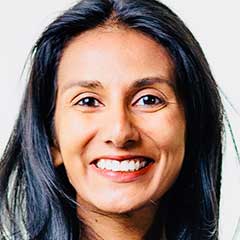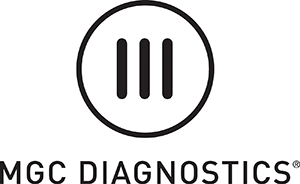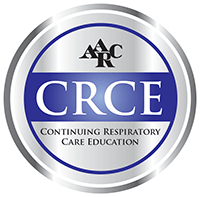Wednesday, Nov. 18
Display Preferences
Hide/Show
9:30 a.m. Central | General
Take a Mind Break
Kaiut Yoga
Julia O’Shea
Show description
Julia O’Shea’s journey to yoga started while she was studying to be a respiratory therapist. Her research led her to study complementary alternative therapies for asthma, one of which is yoga. She currently works in the Pulmonary Rehab Center at the UVM Medical Center in Burlington, Vermont. Kaiut Yoga is about freedom of movement and has been designed to work through chronic pain and injuries, general aches and stiffness, and works for the inflexible, hyper flexible and the aging body. Relax your mind and prepare your body for a day of virtual education as Julia leads a session developed exclusively for registrants of AARC Congress 2020 LIVE!
10:00 a.m.–11:00 a.m. Central | General
Opening Keynote — 2020: Chaos, Crisis, and the Path Forward
Nisha Mehta, MD
Show description

2020 and the COVID-19 pandemic brought unprecedented stressors on an already stretched workforce, amplifying and bringing to light pre-existing issues in the healthcare landscape. While our teams heroically met the challenges they were faced with from a clinical perspective, they also struggled behind the scenes. Access to adequate PPE, sickness amongst clinicians, and emotional trauma contributed to rising burnout and clinician shortages that raise questions about the sustainability of the workforce. Looking ahead, it is clear that an emphasis on well-being and protection of our healthcare system's biggest asset, clinicians, is an essential policy priority for both organizations and patients, and this discussion will focus on the need to come up with solutions that move the needle in regards to career longevity.
12:00 p.m.–1:30 p.m. Central | Clinical Practice
Open Forum — Editors’ Choice
Supported by an unrestricted educational grant from
Show description
Selected as the best Open Forum abstracts for 2020. Each author will provide a short PowerPoint presentation followed by an open discussion of the study with the moderators and attendees.
12:00 p.m.–1:55 p.m. Central | Adult Acute Care
SYMPOSIUM: Extracorporeal Membrane Oxygenation (ECMO)
12:00 p.m.–12:35 p.m. Central
Mechanical Ventilation During Adult ECMO
Craig Rackely, MD
Show description
The management of a mechanical ventilator during ECMO is challenging, as optimal management strategies remain unknown. During this lecture, the speaker will review the current evidence and strategies regarding mechanical ventilation during ECMO.
This session is part of the “Extracorporeal Membrane Oxygenation (ECMO)” symposium.
12:40 p.m.–1:15 p.m. Central
Sedation Management and Mobilization During ECMO
Cara Agerstrand, MD
Show description
The lecture will review the evidence and common practices that pertain to the sedation management and mobilization during ECMO.
This session is part of the “Extracorporeal Membrane Oxygenation (ECMO)” symposium.
1:20 p.m.–1:55 p.m. Central
Discontinuation of ECMO
Craig Rackely, MD
Show description
The lecture will review the current evidence and strategies related to the discontinuation of ECMO.
This session is part of the “Extracorporeal Membrane Oxygenation (ECMO)” symposium.
12:00 p.m.–1:55 p.m. Central | Adult Acute Care
SYMPOSIUM: New Horizons Care of the High Risk Surgical Patient
12:00 p.m.–12:35 p.m. Central
Prevention and Treatment of Postoperative Pulmonary Complications
Rich Branson, MSc, RRT, FAARC
Show description
Changes in lung volumes and respiratory mechanics are well known following upper abdomen and thoracic surgery. Respiratory therapists perform a host of therapies to both prevent and treat postoperative atelectasis and pneumonia. What is the evidence base for postoperative respiratory care?
This session is part of the “New Horizons Care of the High Risk Surgical Patient” symposium.
12:40 p.m.–1:15 p.m. Central
Postoperative management of Hypoxemia: CPAP, HFNC or Standard O2 therapy
Jie Li, PhD, RRT, RRT-ACCS
Show description
Following extubation, oxygen therapy is typically required to alleviate hypoxemia and prevent complications. How much oxygen and how should it be delivered? How important is humidification? Are there differences in the risk and rate of hypoxemia? What are the potential adverse effects of hyperopia? This lecture aims to answer these questions, giving attendees strategies to employ in their patient care.
This session is part of the “New Horizons Care of the High Risk Surgical Patient” symposium.
1:20 p.m.–1:55 p.m. Central
Intraoperative Ventilation in the High-Risk Surgical Patient
Ulrich Schmidt, MD, PhD, MBA
Show description
Management of the high-risk surgical patient includes intraoperative management. The use of low VT, PEEP and recruitment maneuvers have been shown to have both positive and negative complications. This lecture discusses how intraoperative management impacts postoperative pulmonary function and pulmonary complications.
This session is part of the “New Horizons Care of the High Risk Surgical Patient” symposium.
12:00 p.m.–12:35 p.m. Central | Ambulatory & Post-Acute Care
Revisiting Adverse Childhood Experiences: Is This The Key to Managing COPD?
Tammy Kurszewski, DHSc, RRT, RRT-ACCS
Show description
A landmark study conducted by Kaiser-Permanente established a solid relationship between adverse childhood experiences (ACEs) and the development of Chronic Obstructive Pulmonary Disease (COPD). This interactive lecture will provide an overview of the findings from this study as well as current literature associated with the topic. An advanced discussion will challenge those providers in post-acute settings to evaluate opportunities to break the cycle of disease and improve quality-of-life for our at-risk population through education and empowerment.
12:00 p.m.–1:15 p.m. Central | Leadership & Management
Consultants: Get the Scoop and Practice Verbal Judo in Defending Respiratory Care Services
Garry Kauffman, MPA, RRT, FAARC
Roxanne Sams, MA, RN, ARNP-BC
Show description
This interactive presentation will provide the RT leader with an understanding of why external consultants are being used to improve financial performance, quality and patient experience. The presenters will provide instruction to prepare and review performance goals, introduce metrics to measure productivity to match patient demand, and work collaboratively.
12:00 p.m.–1:15 p.m. Central | Neonatal-Pediatrics
PRO/CON: Children with Pediatric Acute Respiratory Distress Syndrome Must be Ventilated With Tidal Volumes Under 8 ml/kg
PRO: Alexandre Rotta, MD
CON: Lee Polikoff, MD
Show description
The Pediatric Acute Lung Injury Consensus Conference did not reach strong agreement on the ideal tidal volume range for use in children with PARDS. In this pro/con conversation, two experts will discuss their views on the tidal volume issue through careful review of the most current data, all while attempting to politely defeat the opposing argument.
12:40 p.m.–1:15 p.m. Central | Ambulatory & Post-Acute Care
Returning Patients With Complex Medical Needs to Their Rural Communities
Melissa Gulizia, RRT
Diane Ulmer, OTR/L
Show description
The attendees will gain valuable insight into the barriers faced by patients with complex medical needs returning to rural communities and their ability to remain within the home with an effective emergency preparedness plan. They will explore tools that members of the interdisciplinary team can use for family training, such as caregiver checklists and manuals, self-advocacy, home access and transportation options. The challenges to acquiring DME companies in rural areas will also be discussed along with access to providers and caregivers to sustain longevity within their community.
1:20 p.m.–1:55 p.m. Central | Leadership & Management
I’m High-Risk…Monitor Me & Keep Me Safe
Robert Mazzola, MD, MSPH, FCCP
Show description
With CMS encouraging total knee and hip surgeries as same-day procedures, who will be monitoring patients at home? This lecture will review outcomes of a grant funded, home monitoring feasibility study. The presenter will report outcomes from patients monitored for four days at home postoperatively using side-by-side recorded pulse oximetry and capnography data. What is the team proposing be studied next to monitor and assure patient safety? Which value alarmed first? What will they monitor next? Learn how implementing such safety initiatives can expand your RT scope of practice.
1:20 p.m.–1:55 p.m. Central | Neonatal-Pediatrics
Are We There Yet? — A Review Pediatric High Flow Nasal Cannula Data
Joel Brown, RRT, FAARC
Show description
The high flow nasal cannula has been a frequently used oxygen delivery device in the pediatric and neonatal patient population for years now. Unfortunately, the evidence hasn't kept up with the use. In this lecture, the speaker will review the best peer-reviewed papers over the last two years that either supports or discourages our current practices.
1:20 p.m.–1:55 p.m. Central | Ambulatory & Post-Acute Care
The Role of Wearable Technology and Smart Phone Applications in COPD Management
Adam Mullaly, BS, RRT, AE-C
Show description
This talk will present a review of the literature, investigating the impact of wearable technology and smartphone applications in COPD management.
2:00 p.m. Central | General
Take a Fun Food Break with an AARC Staff Member
Stove Top® Spinach Balls
Tina Sawyer
Show description
With the holidays coming up, check out this delicious way to share some bite-sized love and some healthy veggies with family and friends. Join Tina Sawyer, AARC Membership Customer Service Manager, for “Cooking with Tina.”
2:00 p.m.-3:30 p.m. Central | Diagnostics/PFT
Open Forum — PFTs, Pulmonary Disease, Home Care, and Equipment
Supported by an unrestricted educational grant from
Show description
Researchers and clinicians present their findings in sessions grouped by topic. Authors briefly present their findings and engage in an open discussion with the moderators and attendees.
2:15 p.m.–3:30 p.m. Central | Adult Acute Care
SYMPOSIUM: Should I Monitor More During Invasive Ventilation?
2:15 p.m.–2:50 p.m. Central
Respiratory Drive of the Patient
L. Felipe Damiani, PhD, MSc, RRT
Show description
Respiratory drive can be both beneficial and harmful to the diaphragm and to the lungs. This lecture will discuss respiratory drive and what the evidence suggests regarding its routine monitoring at the bedside.
This session is part of the “Should I Monitor More During Invasive Ventilation?” symposium.
2:55 p.m.–3:30 p.m. Central
Driving Pressure and Mechanical Power
Eddy Fan, MD, PhD
Show description
Driving pressure and now mechanical power are measurements with growing interest in the profession. This lecture will describe these concepts and discuss any evidence that routine measurements of these values should be used.
This session is part of the “Should I Monitor More During Invasive Ventilation?” symposium.
2:15 p.m.–2:50 p.m. Central | Education
Blending Traditional Lecture Strategies With Simulation-based Training: An Active Learning Approach to Educating RT Students
Randy Case, PhD, RRT, RRT-NPS
Show description
Pedagogical literature and research have demonstrated the benefits of student engagement and active participation in conjunction with traditional lecture strategies within the classroom. Active learning places the student at the center of a lecture’s objective and often has a greater impact on student mastery of higher-level cognitive skills. This presentation will examine the use of this blended style of education within the respiratory therapy curriculum. The lecture will also evaluate the benefits associated with its use from faculty and student perspectives.
2:15 p.m.–2:50 p.m. Central | Neonatal-Pediatrics
The Golden Hour and the Silver Lining: Birth and Beyond
Sherry Courtney, MD
Sponsored by
Show description
Clinical decisions made by the care team immediately after birth can have a significant impact on the preterm lung. The presenter will review current evidence and best practice for the “Golden Hour” and beyond.
2:15 p.m.–2:50 p.m. Central | Adult Acute Care
Preoperative Evaluation of the High-Risk Surgical Patient
Eduardo Mireles-Cabodevila, MD
Sponsored by
Show description
Pulmonary complications are among the most common and most lethal postoperative complications. Part of designing treatment plans includes the preoperative assessment of risk. Preoperative assessment may include pulmonary function testing, exercise tolerance and hemodynamic evaluation. This lecture will describe which patients are at risk and what measurements can predict poor outcomes.
2:15 p.m.–2:50 p.m. Central | Adult Acute Care
Assessment and Treatment of Anxiety During Mechanical Ventilation
Karsten Roberts, MSc, RRT, RRT-ACCS
Show description
Many patients on mechanical ventilation experience anxiety. Cognitive behavioral therapy is a psychological intervention that helps to decrease anxiety. This lecture will use case studies describe how to assess anxiety and use cognitive behavioral therapy to decrease anxiety in mechanically ventilated patients.
2:55 p.m.–3:30 p.m. Central | Education
Using Simulation to Train and Evaluate Airway Management Choreography
Julianne Perretta, MSEd, RRT, CHSE-A
Show description
This session will explore the use of simulation to create an institution-standard for emergency management performance. Building upon work in resuscitative care and identified issues in airway management performance, the presentation will describe the educational interventions and impact they have on the pediatric rapid response team within a large pediatric hospital. It includes airway management choreography, logistics of training, and the use of simulation as a tool for education and data collection.
2:55 p.m.–3:30 p.m. Central | Neonatal-Pediatrics
Use of Aerosolized Medication for the Treatment of Severe BPD
Natalie Napolitano, MPH, RRT, FAARC
Show description
Discuss the newest evidence surrounding the use of aerosolized medications in the treatment of Severe BPD.
2:55 p.m.–3:30 p.m. Central | Leadership & Management
VAP/VAE, CLABSI, CAUTI, SSI: The RTs Role in System-Wide HAI Prevention
Joel Brown, RRT, FAARC
Show description
Hospital acquired infections (HAI) leads to tens of thousands of lost lives and an increase in the cost of care nationwide. In order to eliminate the potential of these infections, many health care systems have adopted a multi-disciplinary approach to process improvement. This lecture will discuss the role of an RT in HAI elimination efforts and review evidence that supports them.
2:55 p.m.–3:30 p.m. Central | Adult Acute Care
Noninvasive Assessment of Shock Using Ultrasound
Sara Mirza, MD, MS
Show description
Ultrasound can be a useful tool to recognize shock etiologies. This lecture will focus on the rationale of ultrasound in shock and diagnostic strategies used to rapidly differentiate shock states.
There are no sessions that match your display preferences.
 Congress 2020 LIVE! Day 1 is approved for 4.33 CRCE.
Congress 2020 LIVE! Day 1 is approved for 4.33 CRCE.